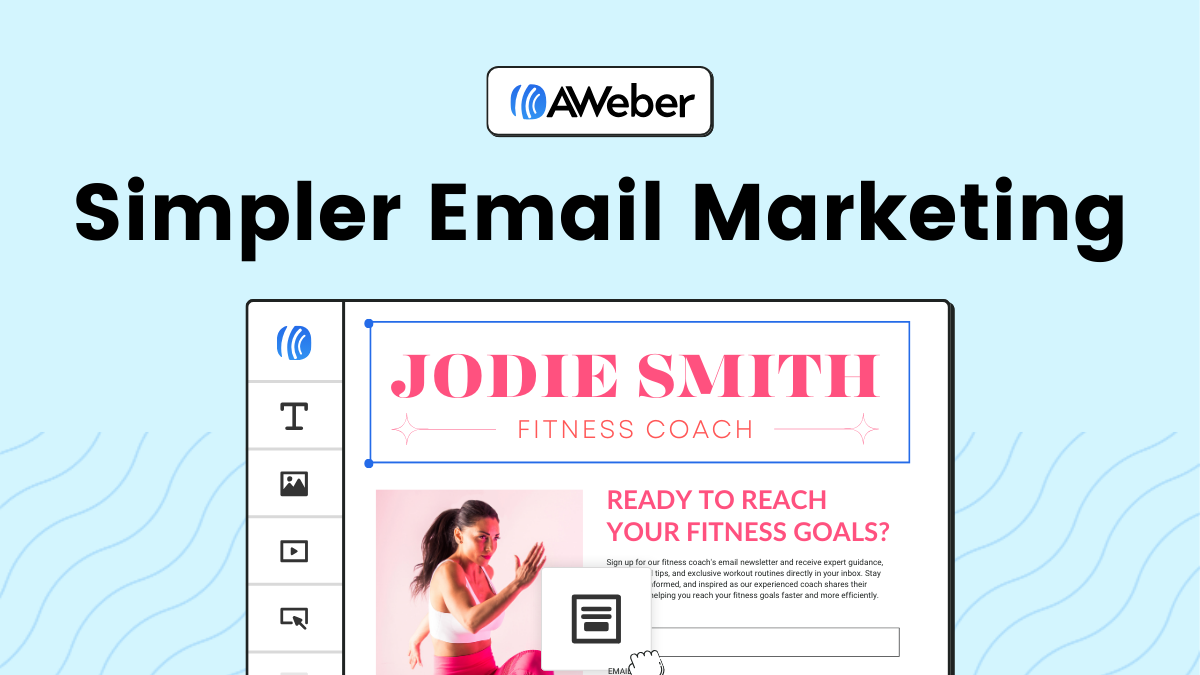Table of Contents
Earn Commissions: Creating High-Converting Content for Affiliate Marketing!
The digital realm is continually offering innovative ways to make money. Among these opportunities, affiliate marketing stands out as a powerful method to earn commissions. This strategy relies on creating persuasive and engaging content to drive sales and conversions.
In this article, we will explore the world of affiliate marketing, understand how it works, and unveil the potential to earn substantial commissions through well-crafted content.
Understanding Affiliate Marketing
Affiliate marketing is a revenue-sharing model where an affiliate earns a commission for marketing another person’s or company’s products. The affiliate simply promotes the product and earns a piece of the profit from each sale they make. The sales are tracked via affiliate links from one website to another.
How Affiliate Marketing Works
Affiliate marketing involves a simple yet effective process. An affiliate marketer selects a product they like or find relevant to their content. They then promote that product on their website or digital platform, utilizing a unique affiliate link provided by the affiliate network or the product’s creator.
This link tracks any purchases made by users who click on it. If a user follows this link and completes a purchase, the affiliate marketer receives a commission. The amount of commission can vary widely, depending on the company and the product. Commissions might be a fixed fee per sale or a percentage of the total sale.
This model encourages affiliates to create high-quality, convincing content to successfully promote the product and increase their chances of making sales, and consequently, to earn commissions.
The Power of Earning Commissions through Affiliate Marketing
Affiliate marketing is a potent tool for earning commissions due to its performance-based nature. Unlike traditional advertising, where expenses are incurred regardless of the outcome, in affiliate marketing, you only pay for results. This win-win situation benefits both the product owner and the affiliate.
The earning potential in affiliate marketing is virtually unlimited. The more effort and time you invest in creating appealing, persuasive content to promote the products, the more commissions you can earn. It’s an attractive prospect for many bloggers, influencers, and entrepreneurs looking for a flexible, scalable income source.
Furthermore, it offers the opportunity to generate passive income, as content containing affiliate links can continue to earn commissions long after it was initially published.
Benefits of High-Converting Content in Affiliate Marketing
Creating high-converting content is one of the cornerstones of a successful affiliate marketing strategy. This type of content is not only engaging and informative, but it also prompts readers to take action, ideally making a purchase using your affiliate links.
The benefits of such content extend beyond just earning commissions. Let’s delve deeper into these advantages.
Increased Website Traffic
High-converting content can be instrumental in driving more traffic to your website. A well-written blog post or an informative review about an affiliate product can attract a wide range of readers. If your content offers valuable insights, solves a problem, or addresses a need, it is likely to be shared widely on social media and other platforms, leading to increased website traffic.
SEO plays a pivotal role here. By targeting relevant keywords and providing meaningful content around those keywords, you can improve your visibility on search engines, further boosting your traffic.
Keep in mind, the more traffic you receive, the higher the potential for conversions and, ultimately, the more commissions you can earn. It’s a ripple effect, starting with creating high-quality, high-converting content that captures attention and drives traffic to your website.
Higher Conversion Rates
In affiliate marketing, a ‘conversion’ refers to when a visitor to your site completes a desired action such as clicking on an affiliate link and making a purchase. High-converting content is precisely designed to achieve this outcome.
This type of content typically includes compelling call-to-actions, persuasive language, and a clear, easy path to purchase. It capitalizes on the reader’s intent and nudges them towards conversion. The key here is to understand your audience’s needs and tailor your content to provide solutions to their problems.
When you successfully create content that resonates with your audience and persuades them to take action, you increase your conversion rates. This directly leads to more sales and, by extension, higher commissions.
Maximizing Commissions Earned
A fundamental benefit of high-converting content is the potential to maximize your earnings from commissions. High-converting content and strategically placed affiliate links can work together to help generate a passive income stream that lasts long after the content has been published.
Creating high-converting content requires a deep understanding of your audience, their needs, and the products or services that can meet those needs. This understanding allows you to create content that not only informs but persuades readers to click on your affiliate links and make purchases.
When done correctly, high-converting content can be a game-changer for affiliate marketers, turning an ordinary blog or website into a potent revenue-generating tool. It’s important to remember that earning higher commissions is not just about promoting more products; it’s about promoting the right products in the right way, to the right people.
This strategic approach is what differentiates successful affiliate marketers who can earn significant commissions from their efforts.
How to Earn Commissions by Creating High-Converting Content
Earning significant commissions through affiliate marketing isn’t merely a matter of choosing products and pasting affiliate links on your website. It involves understanding your target audience and creating content that genuinely resonates with them.
Let’s unpack these critical steps for creating high-converting content to earn commissions.
Identifying Your Target Audience
Understanding who your target audience is forms the foundation for any successful affiliate marketing strategy. Your audience is not just an abstract concept, but a group of real individuals with specific needs, interests, and problems that your content and affiliate products can help address.
Understanding Your Audience’s Needs
Before you can effectively promote a product and convince your audience to make a purchase, you need to understand their needs. A deep understanding of your audience will allow you to select the most relevant products for your affiliate marketing efforts.
Start by identifying the demographics of your audience: their age, gender, location, income level, and occupation. From there, dive into psychographics: their interests, values, fears, desires, and challenges. The more you understand your audience, the better equipped you’ll be to create content that resonates with them.
Engaging with your audience directly can provide invaluable insights. Consider running surveys, asking questions on social media, or even conducting one-on-one interviews. These interactions can help you gain a clearer picture of what your audience needs and how your content and affiliate products can meet those needs.
Tailoring Your Content to Your Audience
Once you understand your audience’s needs, it’s time to tailor your content accordingly. High-converting content addresses your audience’s questions, solves their problems, or meets their needs in some way.
If you’re promoting a fitness product, for instance, your content should go beyond merely describing the product’s features. Instead, it might include fitness tips, exercise routines, or nutritional advice that complements the product. This strategy offers value to your readers, builds trust, and subtly encourages them to consider purchasing the product you’re promoting.
Furthermore, your content should reflect the tone and style that your audience responds to best. If your audience is younger, a casual, conversational tone might be most effective. If your audience is primarily professionals, a more formal, information-dense style might be better received.
Crafting Engaging and Relevant Content
After understanding your audience, the next crucial step in your journey to earn commissions is crafting engaging and relevant content. The right content should both resonate with your readers and promote your affiliate products effectively.
This involves careful topic selection and writing in a manner that truly speaks to your audience.
Choosing Topics That Convert
The best way to earn commissions is to create content that aligns closely with your affiliate products and directly appeals to your target audience. The topics you choose should be broad enough to capture a wide interest but specific enough to show the clear benefits of the product you’re promoting.
For instance, if you are an affiliate for a fitness equipment brand, a blog post like “How to Create a Home Gym on a Budget” would be a good fit. This topic is highly relevant to your product, likely to interest your audience, and provides an opportunity to highlight the affordability of your affiliate products.
Additionally, consider the questions, problems, or interests that your target audience has. A well-chosen topic can address these and gently lead the reader to the conclusion that the product you’re promoting is the solution they need. This indirect selling approach can be highly effective in driving conversions and helping you earn commissions.
Writing Content That Resonates with Your Audience
The way you present your content is just as important as the topic you choose. Your writing should resonate with your audience, engaging them deeply and encouraging them to take the desired action.
Use language that your audience is comfortable with. If they are beginners in the topic you’re writing about, avoid jargon and explain concepts clearly. If they are more advanced, provide in-depth information and detailed analyses. Remember, your aim is to create content that your audience finds valuable and trustworthy.
In addition, craft your content to lead your readers naturally towards your affiliate links. This could mean showing how the product you’re promoting can solve a problem, fulfill a need, or improve their life in some way. Include testimonials or case studies if possible to provide real-world proof of the product’s benefits.
Moreover, remember to include strong calls-to-action throughout your content. These CTAs should be clear, enticing, and motivate the reader to click on your affiliate links. The more your content resonates with your audience and successfully leads them to convert, the more you’ll earn commissions.
Incorporating Affiliate Links Effectively
In the quest to earn commissions through affiliate marketing, the strategic use of affiliate links in your content is paramount. This involves not just where you place the links, but also how you balance your genuine, valuable content with promotional materials. Let’s explore these aspects in more detail.
Placement of Affiliate Links
The placement of affiliate links within your content can significantly influence the click-through rate and ultimately, the commissions you earn. An affiliate link that’s hidden in a sidebar or buried at the end of an article is less likely to be clicked on than one that’s prominently placed.
Consider incorporating affiliate links in multiple locations throughout your content. This could include:
- In the introduction, where you can pique curiosity about the product.
- Within the body of the content, where you can align the product with the information or story you’re sharing.
- In a conclusion or summary, where you make a final, persuasive case for the product.
However, it’s important to strike a balance. Too many links can overwhelm or annoy your readers, while too few can result in missed opportunities for conversions. Aim for a natural, organic inclusion of links that don’t disrupt the reader’s experience.
Balancing Content and Promotions
The ability to balance high-quality content and promotions is an art that every affiliate marketer needs to master. While your ultimate goal is to earn commissions, your content shouldn’t come off as overly salesy or promotional. Remember, your readers come to your site for valuable, engaging content, not a sales pitch.
Your content should provide value in its own right, apart from the affiliate products you’re promoting. This could mean offering expert insights, helpful tips, engaging stories, or useful resources. When your readers see that you consistently provide value, they’re more likely to trust your recommendations and click on your affiliate links.
Once you’ve delivered on your promise of valuable content, you can introduce your affiliate products in a way that feels natural and relevant. Show how the product can provide a solution or benefit to the reader, rather than simply extolling its features.
Optimizing Your Content to Earn More Commissions
Once you have crafted high-converting content and effectively incorporated your affiliate links, your next step is to optimize your content. One of the most effective ways to do this is by utilizing search engine optimization (SEO) techniques.
Proper SEO can increase your content’s visibility, attract more potential customers, and help you earn more commissions.
Utilizing SEO Techniques
Search engine optimization is a collection of strategies aimed at increasing your website’s visibility on search engine results pages. This increased visibility can lead to more traffic to your site, and consequently, more opportunities to earn commissions from your affiliate marketing efforts.
Importance of SEO in Affiliate Marketing
SEO is essential in affiliate marketing because it allows your content to be discovered by potential customers. People use search engines to find information, solutions to their problems, and products to purchase.
By optimizing your content for search engines, you increase the chances of your content appearing in search results when someone searches for related keywords.
Without SEO, your high-quality, high-converting content might remain hidden from potential readers, significantly limiting your ability to earn commissions. On the other hand, effective SEO can lead to a steady stream of organic traffic to your site, increasing your chances of making more sales and earning more commissions.
Keyword Research and Optimization
A crucial aspect of SEO is keyword research and optimization. This involves identifying the keywords and phrases that your potential customers are searching for, and then optimizing your content around these keywords.
There are several tools available online, like SEOPowersuite, Google Keyword Planner, and Ahrefs, that can help you find relevant keywords for your niche. When selecting keywords, consider both the search volume (how many people are searching for it) and competitiveness (how difficult it will be to rank for it).
Once you have identified your keywords, incorporate them naturally into your content. This includes your headings, meta description, URL, and throughout the body of your text. However, avoid keyword stuffing as it can lead to penalties from search engines. Instead, aim for a natural and reader-friendly inclusion of keywords.
Remember, SEO is not a one-time task but an ongoing process. It’s essential to continually monitor your performance, adjust your strategies as needed, and stay updated on the latest SEO trends.
Promoting Content Through Various Channels
Creating high-converting content and optimizing it for search engines is just half the battle in your mission to earn commissions. Equally important is promoting your content through various channels to reach a larger audience.
Let’s explore how social media and email marketing can be powerful tools in boosting your affiliate marketing efforts.
Utilizing Social Media to Boost Your Affiliate Marketing
Social media platforms are a potent tool for promoting your content and expanding your reach. They can help you connect with your audience on a more personal level, build relationships, and increase your chances of earning commissions.
To start, select the platforms that align best with your target audience. Each platform has its unique user demographics and content preferences. For instance, Instagram and Snapchat may be more effective for reaching a younger audience, while LinkedIn is better for targeting professionals.
Once you’ve selected your platforms, post regular updates to engage your audience. These updates should include a mix of promotional content, valuable non-promotional content, and interactive content like quizzes or questions.
Remember to integrate your affiliate links into your social media content strategically. For example, you could include links in your bio, within posts, or in the case of platforms like Instagram, use the ‘swipe up’ feature in stories to direct followers to your affiliate products.
Email Marketing and Affiliate Marketing
Email marketing can also be a powerful strategy for promoting your content and earning commissions. By building an email list, you gain direct access to your audience, allowing for more personalized and targeted communication.
Start by offering something valuable in exchange for your audience’s email addresses, such as a free ebook or a subscription to a helpful newsletter. Once you have a list, send regular emails containing both valuable content and subtle promotions of your affiliate products.
For instance, if you write a new blog post, you could send an email with a brief summary and a link to the full post on your site. Within the blog post, strategically incorporate your affiliate links. This way, you are not only providing value but also subtly guiding your readers towards your affiliate products.
It’s also a good idea to segment your email list based on your subscribers’ interests or behaviors. This can enable more targeted promotions and help you maximize the commissions you earn.
Analyzing and Adjusting Your Strategy
The journey to earn commissions from affiliate marketing doesn’t end once you’ve created and promoted your content. To ensure continued success, it’s vital to track your performance, analyze your results, and adjust your strategy as needed. Let’s dive deeper into these aspects.
Tracking Your Success
To determine if your content is effectively converting visitors into customers, you need to track your success. This means keeping an eye on metrics such as click-through rates, conversion rates, and the total commissions earned.
There are several affiliate marketing platforms and tools, such as Google Analytics, that can help you monitor these metrics. By tracking your performance, you can identify which content and promotional strategies are working best for your audience.
For instance, if a specific blog post is generating a lot of affiliate sales, you might consider creating similar content in the future. Conversely, if a certain promotional channel isn’t driving much traffic or conversions, it might be worth reconsidering your approach or focusing your efforts elsewhere.
Continuous Improvement for Better Commissions
Armed with your performance data, you can then make informed adjustments to your affiliate marketing strategy. This could involve anything from tweaking your SEO keywords to altering your promotional tactics or experimenting with different affiliate products.
Remember that the landscape of affiliate marketing, just like any other digital marketing field, is continuously evolving. What works today may not necessarily work tomorrow. So, stay updated on the latest trends, techniques, and best practices in affiliate marketing.
Don’t be afraid to experiment and take risks. Try out new content formats, explore untapped promotional channels, or test out different affiliate programs. Even if not all of these experiments are successful, each one can provide valuable insights that can help you refine your strategy and earn more commissions.
Leveraging Tools and Resources for Affiliate Marketing Success
In your journey to earn commissions through affiliate marketing, it’s essential to leverage various tools and resources. These can help streamline your efforts, increase your efficiency, and ultimately lead to higher conversion rates.
Tools for Content Creation and SEO
Creating high-quality, SEO-optimized content is critical in affiliate marketing. Fortunately, there are several tools available to help in this area.
Content management systems (CMS) like WordPress make it easy to create and manage your website and blog posts. Meanwhile, SEO tools like SEMrush and Ahrefs can help with keyword research, competitor analysis, and tracking your search rankings.
Tools such as Grammarly can assist in ensuring your content is grammatically sound and readable, while Canva can be used to create attractive visuals to enhance your content.
Affiliate Marketing Platforms and Analytics Tools
Affiliate marketing platforms like Flexoffers, MyLead, or ShareASale provide access to a wide array of affiliate programs. These platforms also often offer built-in tracking and analytics tools, making it easier to monitor your performance and earnings.
Google Analytics is another essential tool for any affiliate marketer. It provides detailed insights about your website traffic, user behavior, and conversion rates. With this information, you can make data-driven decisions to improve your content and promotional strategies.
Tools for Content Promotion
Promoting your content is easier with the help of certain tools. For social media, tools like Buffer and Hootsuite allow you to schedule posts in advance, saving you time and ensuring consistency.
For email marketing, services like Mailmunch or Aweber offer features for managing your email list, segmenting your audience, and designing professional-looking emails.
Conclusion
Affiliate marketing is a powerful way to earn commissions by promoting products or services that you believe in. This process, however, requires careful planning, consistent execution, and continuous optimization.
As we conclude, let’s recap the essential steps and discuss how you can get started with earning commissions through high-converting content today.
Recap: Earning Commissions Through High-Converting Content
Earning commissions through affiliate marketing begins with understanding the model and the power of high-converting content. Identifying your target audience and crafting content that resonates with them is crucial. It’s also important to strategically incorporate your affiliate links into your content.
Promoting your content across various channels like social media and emails can boost your reach, while utilizing SEO techniques can increase your visibility. As you go along, analyzing your results and adjusting your strategies are key to ensuring continued success.
Throughout the journey, make use of various tools and resources available to streamline your efforts and provide valuable insights. These tools can assist with content creation, SEO, content promotion, and tracking your success.
Next Steps to Start Earning Commissions Today
Ready to start earning commissions? Here’s how to get started:
- Choose Your Affiliate Programs: Start by deciding which products or services you want to promote. Choose products that you genuinely believe in and that align with the interests of your audience.
- Create Your High-Converting Content: Craft engaging, high-quality content that resonates with your audience. Don’t forget to optimize it for search engines and incorporate your affiliate links strategically.
- Promote Your Content: Use various channels like social media and email marketing to promote your content and reach a larger audience.
- Track, Analyze, and Adjust: Monitor your performance, analyze your results, and adjust your strategies as needed. Use the insights gained to continually improve and earn more commissions.
By following these steps, you can build an effective affiliate marketing strategy that allows you to provide value to your audience and earn commissions from your content. Remember, the journey to success in affiliate marketing is a marathon, not a sprint. Stay patient, stay consistent, and you’re sure to see results over time.








